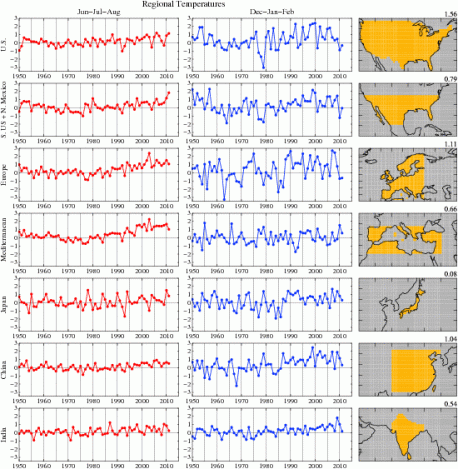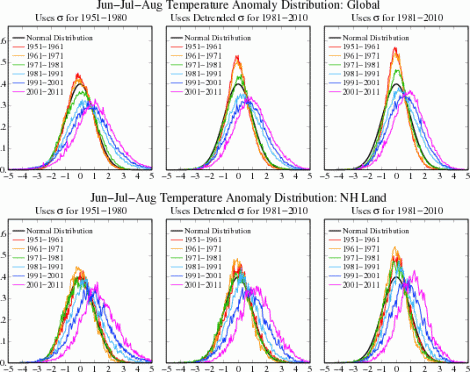When I testified before the Senate in the hot summer of 1988, I warned of the kind of future that climate change would bring to us and our planet. I painted a grim picture of the consequences of steadily increasing temperatures, driven by mankind’s use of fossil fuels.
But I have a confession to make: I was too optimistic.
James Hansen directs NASA’s Goddard Institute. You’ve heard the name; he was one of the earliest, loudest voices calling for action on climate change. He’s the man who told 350’s Bill McKibben that a completed Keystone XL pipeline was “game over” for the planet.
Today, in a study released by NASA, Hansen suggests that we’re already way, way behind in the game.

Photo by trdesignr.
The quote above comes from an opinion piece that ran in the Washington Post this weekend. In it, Hansen outlines the ways in which global warming has exceeded even his own pessimistic expectations.
Our new peer-reviewed study, published by the National Academy of Sciences, makes clear that while average global temperature has been steadily rising due to a warming climate (up about 1.5 degrees Fahrenheit in the past century), the extremes are actually becoming much more frequent and more intense worldwide. …
Such events used to be exceedingly rare. Extremely hot temperatures covered about 0.1 percent to 0.2 percent of the globe in the base period of our study, from 1951 to 1980. In the last three decades, while the average temperature has slowly risen, the extremes have soared and now cover about 10 percent of the globe.
The analogy Hansen uses is of a die. Roll it and you have one-in-six odds of turning up any particular number. Unless the die is loaded, weighted to turn up a particular value more often. In any given year, in any given place, Hansen argues, rolling the climate die is more and more loaded — you might turn up a cool year, but four-and-a-half out of six times, you’re going to get a year that is far warmer than the baseline.
“It’s become so clear to the science,” Hansen said in a conference call this morning, “but a person who lives in one place may not notice that.” If you live in a place that isn’t drought-afflicted, this year may not seem that unusually warm. But the odds are that next year will. Or the year after. Or the next decade. You could roll seven ones in a row — but Hansen suggests you not bet on it. The United States, despite having contributed three times more carbon dioxide to the atmosphere than the next largest contributor, keeps getting lucky in what it rolls. “We’ve been pretty lucky in the U.S.,” Hansen said, but, “there’s no reason we should continue to be lucky.”

Jun-Jul-Aug and Dec-Jan-Feb temperature anomalies (degrees C) for area shown on the right. Click to embiggen. (Image courtesy of Columbia University.)
The paper released today isn’t intended to demonstrate human causation behind the temperature increase — just that temperature anomalies are increasing, as shown by mathematical analysis. Columbia University has a massive page of analysis demonstrating the findings in graph after graph after graph. You can visualize the professor standing in front of a drowsy class, tapping each chart in order with a pointer. “Here again, we see …”
Which raises a key point: In what way will this research make a difference?
The value of An Inconvenient Truth lay in its novelty. That the world was warming was presented in detail and with evidence to a broad audience for the first time. The research released today continues to add evidence, to make the case that warming is happening faster than expected. But is anyone willing to bet that it’s not doomed to suffer the fate of a thousand studies before it, papier-mached onto a massive warning sign that Americans blithely ignore? Is the study remarkable? Yes. Is it remarkable enough to inspire political change? No. For most Americans, it’s a professor at the front of a classroom, while they look out the window, daydreaming about laying on the beach.

Frequency of occurence (y-axis) of local temperature anomalies (relative to 1951-1980 mean) divided by local standard deviations (x-axis) obtained by counting how many gridboxes have anomalies within each 0.05 interval over 11-year periods. Click to embiggen. (Image courtesy of Columbia University.)
“Climate is chaotic, it is variable, but it is being pushed systemicatically in a way that will have consequences,” Hansen said this morning. “It is already having consequences and the public needs to pay attention to it.”
Very true. But it looks as though we’re more likely to just keep hoping to roll ones.



